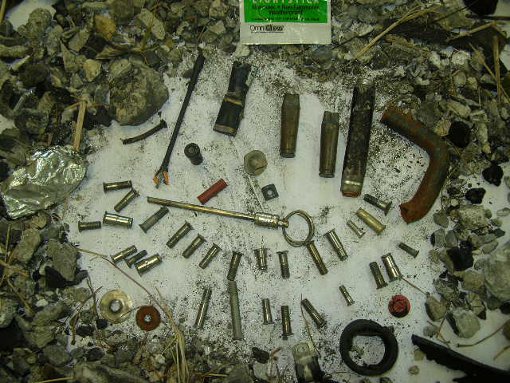For many workers foreign object debris training means nap time; a boring video in a darkened room administered by a bored training representative who has no real contact with FOD. It doesn’t have to be that way and can’t be that way.
Foreign object debris training is a tremendous awareness tool that is not always given the priority and forethought it deserves. It is an opportunity to highlight areas needing improvement, reinforce some of the rules that are not always being adhered to, introduce new initiatives, and applaud accomplishments.
Suggested Resources
Check out our articles on What is FOD? or How to Set Up a FOD Program for more information.
New Employee FOD Certification & Training
New employees should not be allowed to start work at your facility until they have attended a FOD Program orientation.
Foreign object debris/damage training should include:
- The definition of FOD. Don’t assume everyone knows what foreign object damage is. Show photos of FOD and pass around samples of debris found at your facility.
- Identify the FOD SOP* (Standard Operating Procedure) and provide a copy of the FOD procedure to each new employee.
- Emphasize the importance of “Clean-As-You-Go” and define the rules that apply to daily work routines.
- Review tool and hardware rules to include tool crib issued items.
- Review the Missing Item Report, when to use it and how to submit it.
- Identify FOD control areas. Show examples of typical FOD charts/metrics.
- If there are FOD finding equipment (such as Borescopes available at your site), discuss who may use them, and general safety rules. Also identify any other specialized tools used to locate or remove foreign objects.
- Explain the role of the FOD department and how to contact a representative if needed. Put out the Welcome Mat.
* SOP: Standard Operating Procedure — Written instructions outlining how an action will be carried out.

Annual Foreign Object Debris Training
Annual FOD refresher training is required by most military operations and commercial contracts/certifications and should be required for every aerospace operation. There is no regulation laid down regarding what to provide in the training; that is left up to the operating unit. Sometimes the company or command disseminates a FOD video, but training is greatly enhanced by providing information relevant to the local operation — presented by the FOD manager or coordinator.
Ask the question: “What should they know to improve?” Annual training may be the only opportunity during the year to get everyone on the site sitting down, listening to the ups and downs of FOD. Use training time to full advantage by providing details of FOD problems encountered within the last year, corrective actions taken or planned, and a summary of program initiatives with specific expectations for the upcoming year.
When developing the annual foreign object debris training program, determine the overall message(s) you want to get across. “Take home value,” as it is called, is what people remember after a training program is completed. If someone asks a participant in the class “what was covered, what do they want us to do?” the answers should be predictable if the training got the messages across.
Attempt to focus on a few key points to drive home…not a giant shopping list of everything imaginable. Organize the material to be presented into a logical flow, using colorful charts and photos that emphasize and support the focus.
Preparation for an annual program shouldn’t start a week before the foreign object debris training is to be conducted; it needs to be an ongoing collection of data, photos, and materials accumulated throughout the year:
Data
- Charts that depict audit results, FOD incidents, and performance of individual work centers
- Customer feedback
- Management initiatives/directives
- Performance toward goals
Photos
“A picture is worth a thousand words.” A digital camera is a good investment as photos can be transmitted electronically, stored on disk, and easily made into slides.
- Take photos of FOD incidents. Have your camera ready to capture damaged engine blades, debris in tires, trash blowing down the runway, or a foreign object clogging a hydraulic line. Use every opportunity to save a great example for training/awareness. Let everyone know that they are to contact the FOD Department when an incident occurs for investigation, documentation, and photos.
- Photos of improper procedure; display beside photo of the correct method.
- Photos of new tools and equipment
- Photos of workplace organization initiatives, new signs, designated spaces, and FOD Control Zones.

Materials
- Tagged and bagged examples of debris removed from production and operational aircraft.
- Damaged engine blades or other aircraft components.
- Pamphlets, booklets, or handouts for all attendees.
- Awards, recognition letters, or other documented responses from the customer.
Plan to exhibit FOD tools and equipment. For example: a borescope, inspection equipment, vacuum tubes, tote trays, etc. Be prepared to demonstrate if requested.
When assembling the foreign object damage training program, determine class size, who will attend, when, where the training will be held and how long to keep the workforce off the job (45 minutes is a good rule of thumb). If possible, use a training area centrally located to reduce travel time, and schedule classes by organization/work center so that classes may be tailored to the type of work performed and particular problems encountered in that area.
Provide training for all shifts and include all groups that touch the product, come into the work areas, or that may in some way contribute to the generation of FOD. Can debris in the back of a truck be brought to work in the parking lot contribute to a FOD incident? Can a Security Guard who travels around the site be immune from understanding what is going on with the FOD Prevention Program? Then consider requiring all organizations at the site to attend the training.
Campaigns
Interspersed throughout the year, campaigns can be conducted to keep FOD awareness piqued. Campaigns are designed to engage and involve the workforce with activities that are interesting and may add some fun to the routine of FOD Prevention. Usually, prizes or tokens are part of the activities, and winners of special prizes are recognized by management and photographed for display or for the site newspaper or “rag sheet.”
Campaigns must be carefully organized and planned to be successful. Management should be engaged and fully supportive. Let your imagination run wild in developing a list of possible events, and select the most plausible for your budget and focus. The intent should be to heighten awareness — not just hand out prizes or little do-dads with the FOD logo on them.
Be sure you get the best value for your money. A couple of campaigns that have been tried and proven successful are FOD Awareness Week and the Annual FOD Walk. Your need for “events” will be influenced by the number and type of FOD incidents or recognized threats.
